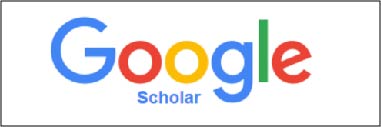ASSOCIATION OF SOCIOECONOMIC STATUS AND DEMOGRAPHIC ON SUBJECTIVE WELL BEING IN INDONESIA 2014-2015 A CROSS SECTIONAL STUDY
DOI:
https://doi.org/10.30997/jsh.v14i2.9969Keywords:
Demographics, Socioeconomics, Subjective well-beingAbstract
Subjective well-being is described as a person’s level of happiness and satisfaction with their life. Subjective well-being is critical in developing and sustaining a healthy and productive society. The negative consequence of not achieving subjective well-being is the formation of bad sentiments, emotions, or moods, which can harm health and raise the risk of disease. Several early studies were confined to certain groups, and this subjective will-being research across Indonesia utilizing IFLS secondary data is still limited. This research aims to examine the impact of socioeconomic status and demographic characteristics on subjective well-being in the Indonesian population using a cross-sectional study design using secondary data from the Indonesia Family Life Survey (IFLS5) wave 5, 2014-2015, the inclusion and exclusion criteria were met by a total of 30,147 respondents. This study will employ stratified random sampling, which is consistent with that used in IFLS5, and the data acquired will be examined through univariate, bivariate, and multivariate analysis. As many as 13.69% of respondents were unsatisfied with their lives in general. After controlling job satisfaction, job stress, economic level, age, and gender, the greatest variable on subjective well-being is job satisfaction, which is equal to 5.38 times (95% CI 4.94 - 5.987; p-value 0.001). This means that respondents who are dissatisfied with their work are also at risk of feeling dissatisfied with subjective well-being.
References
Borualogo, I. S. (2021) ‘Subjective Well-Being of Indonesian Children: A Perspective of Material Well-Being’, ANIMA Indonesian Psychological Journal, 36(2), pp. 204–230. doi: 10.1515/9783111634487-006.
Das, K. V. et al. (2020) ‘Understanding subjective well-being: perspectives from psychology and public health’, Public Health Reviews. Public Health Reviews, 41(1), pp. 1–32. doi: 10.1186/s40985-020-00142-5.
Diener, E. (ed.) (2009) The science of well-being: The collected works of Ed Diener., The science of well-being: The collected works of Ed Diener. New York, NY, US: Springer Science + Business Media (Social indicators research series.). doi: 10.1007/978-90-481-2350-6.
Diener, E. (2023) ‘Happiness: The Science of Subjective Well-Being’, in Noba textbook series: Psychology. Salt Lake City Utah: DEF Publishers. Available at: https://nobaproject.com/modules/happiness-the-science-of-subjective-well-being#content (Accessed: 16 July 2023).
Diener, E. and Suh, E. (1997) ‘Measuring quality of life: Economic, social, and subjective indicators’, Social Indicators Research, 40(1–2), pp. 189–216. doi: 10.1023/a:1006859511756.
Durand, M. (2015) ‘The OECD Better Life Initiative: How’s Life? and the Measurement of Well-Being’, Review of Income and Wealth. John Wiley & Sons, Ltd, 61(1), pp. 4–17. doi: https://doi.org/10.1111/roiw.12156.
Hiswåls, A. S. et al. (2017) ‘Experiences of unemployment and well-being after job loss during economic recession: Results of a qualitative study in east central Sweden’, Journal of Public Health Research, 6(3), pp. 135–141. doi: 10.4081/jphr.2017.995.
Jongbloed, J. (2018) ‘Higher education for happiness? Investigating the impact of education on the hedonic and eudaimonic well-being of Europeans’, European Educational Research Journal, 17(5), pp. 733–754. doi: 10.1177/1474904118770818.
Joshi, U. (2010) ‘Subjective Well-Being by Gender Upasna’, Journal of Economics and Behavioral Studies, 1(1), pp. 20–26. Available at: https://www.researchgate.net/publication/228513638_Subjective_Well-Being_by_Gender#:~:text=Subjective well-being is statistically,lives in a similar way.
Karni, A. (2018) ‘Subjective Well-being Pada Lansia’, Syi’ar, 18(2), pp. 84–102.
King, P. E. and Boyatzis, C. J. (2015) ‘Religious and spiritual development.’, in Handbook of child psychology and developmental science: Socioemotional processes, Vol. 3, 7th ed. Hoboken, NJ, US: John Wiley & Sons, Inc., pp. 975–1021. doi: 10.1002/9781118963418.childpsy323.
Lokeshwari, R. and Monika, C. (2021) ‘A Study Of Subjective Well-Being On Gender’, Jetir, 8(1), pp. 536–540.
Maggino, F. and Brulé, G. (2017) Metrics of Subjective Well-Being: Limits and Improvements. Switzerland: Springer International Publishing.
Michie, S. (2002) ‘Causes and management of stress at work.’, Occupational and environmental medicine, 59(1), pp. 67–72. doi: 10.1136/oem.59.1.67.
Mujamiasih, M., Prihastuty, R. and Hariyadi, S. (2013) ‘Subjective well-being (SWB): Studi indigenous karyawan bersuku Jawa’, Journal of Social and Industrial Psychology, 2(2), pp. 36–42.
Ndayambaje, E. et al. (2020) ‘Marital status and subjective well-being: Does education level take into account?’, Cakrawala Pendidikan, 39(1), pp. 120–132. doi: 10.21831/cp.v39i1.29620.
De Neve, J.-E. et al. (2013) ‘The Objective Benefits of Subjective Well-Being’, World Happiness Report, (January), pp. 1–36. Available at: https://www.researchgate.net/publication/255483372_The_Objective_Benefits_of_Subjective_Well-Being.
Nikolaev, B. (2018) ‘Does Higher Education Increase Hedonic and Eudaimonic Happiness?’, Journal of Happiness Studies, 19(2), pp. 483–504. doi: 10.1007/s10902-016-9833-y.
RAND (2016) RAND IFLS-5 Survey Description . Available at: https://www.rand.org/well-being/social-and-behavioral-policy/data/FLS/IFLS/ifls5.html (Accessed: 1 June 2020).
Ray, T. K. (2022) ‘Work related well-being is associated with individual subjective well-being’, Industrial Health, 60(3), pp. 242–252. doi: 10.2486/indhealth.2021-0122.
Sabri, L. and Hastono, S. P. (2007) Statistik Kesehatan. Jakarta: RajaGrafindo.
Salameh, A. A. et al. (2022) ‘Socio-economic determinants of subjective wellbeing toward Sustainable Development Goals: An insight from a developing country’, Frontiers in Psychology, 13(September), pp. 1–18. doi: 10.3389/fpsyg.2022.961400.
Setia, M. S. (2016) ‘Methodology Series Module 3: Cross-sectional Studies.’, Indian journal of dermatology. Wolters Kluwer -- Medknow Publications, 61(3), pp. 261–4. doi: 10.4103/0019-5154.182410.
Stevenson, B. and Wolfers, J. (2008) ‘Economic growth and subjective well-being: Reassessing the Easterlin paradox’, Brookings Papers on Economic Activity, (SPRING), pp. 1–87. doi: 10.2139/ssrn.1273524.
Stone, A. A. and Mackie, C. (2013) Subjective Well-Being in a Policy-Relevant Framework Subjective Well-Being, The National Academies Press. Available at: https://www.ncbi.nlm.nih.gov/books/NBK174473/pdf/Bookshelf_NBK174473.pdf.
Strauss, J., Witoelar, F. and Sikoki, B. (2016) ‘User’s Guide for the Indonesia Family Life Survey, Wave 5: Volume 2’, User’s Guide for the Indonesia Family Life Survey, Wave 5: Volume 2, 2(March). doi: 10.7249/wr1143.2.
Tran, C. T. H. et al. (2020) ‘Stress Management in the Modern Workplace and the Role of Human Resource Professionals’, Business Ethics and Leadership, 4(2), pp. 26–40. doi: 10.21272/bel.4(2).26-40.2020.
Tsalasah, E. F., Noermijati and Ratnawati, K. (2019) ‘The Effect of Work Stress On The Performance Of Employees Psychological Well-Being And Subjective Well-Being’, MEC-J (Management and Economics Journal), 3(1), pp. 95–107. Available at: https://doi.org/10.18860/mec-j.v0i2.5570.
Villani, D. et al. (2019) ‘The role of spirituality and religiosity in subjective well-being of individuals with different religious status’, Frontiers in Psychology, 10(JULY). doi: 10.3389/fpsyg.2019.01525.
Wang, Z. and Sohail, M. T. (2022) ‘Short- and Long-Run Influence of Education on Subjective Well-Being: The Role of Information and Communication Technology in China’, Frontiers in Psychology, 13(June), pp. 1–8. doi: 10.3389/fpsyg.2022.927562.
Downloads
Published
How to Cite
Issue
Section
License
Copyright (c) 2023 Jurnal Sosial Humaniora

This work is licensed under a Creative Commons Attribution-ShareAlike 4.0 International License.
Authors submitting manuscripts must understand and agree to copyright the manuscript of the article was transferred to OJS Djuanda University. All rights reserved. The copyright release statement for the Journal of Social Humanities is set out in the Agreement Transfer of Copyright. This work is licensed under Creative Commons Attribution-ShareAlike (CC BY-SA) version 4.0 where Author and Readers can copy and redistribute material in any media or format , as well as mixing, modifying and building materials for any purpose, but they must provide appropriate credit (citing articles or content), provides a link to the license, and indicates when changes have been made. If you mix, modify, or develop, the materials you have to distribute your contributions are under the same license as the originals.
















